Dog C-section - All You Need To Know
09.11.2022.
Cesarean section in dogs, or as it is usually called C-section, is a procedure that is performed to remove the puppies from the uterus. In most cases, C-section is performed as an emergency procedure, but there could be situations where this surgery will be performed as a precaution.
Most dogs will deliver puppies naturally, but if there are complications or the puppies are too big, a C-section will be recommended. Most dogs will recover quickly after the procedure, but this will solely depend on the dog and the time of labor.
Today we bring you all the necessary information you will have to know if you are planning to deliver your puppies with C-section. There are a few things you should be careful about. Let's start.
When is a C-section in dogs recommended?
Not all dogs will deliver puppies naturally. For some, C-section will be required. Depending on your dog, your vet can recommend C-sections in some situations.
Situations when your vet could recommend C-section include
- Complications during labor
- When the puppies are too big
- When there is only a single puppy
- When your female dog has some health condition that prevents natural labor.
In these situations, you should trust your vet and his assessment. He will definitely do what is best for your dog and her puppies.
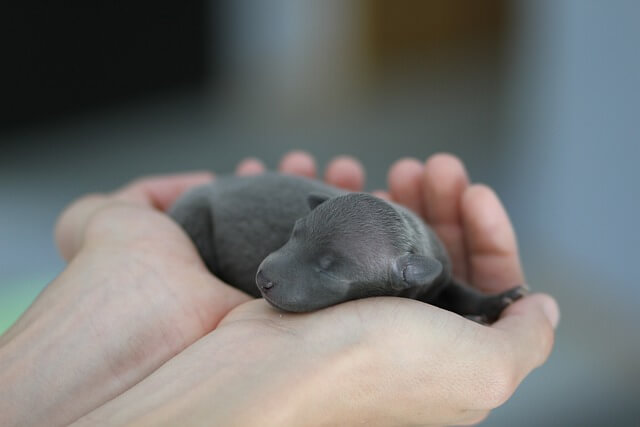
RELATED: Dog Pregnancy: Signs, Diagnosis & Preparation
How many C-sections can a dog have?
This is a complex question; the answer will depend on many factors. Generally speaking, one dog shouldn't have more than 2-3 C-sections in their lifetime. This will depend on the dog itself, her general health, and other factors.
If you want to preserve the health of your female dog and her puppies, you shouldn’t force your dog to have 3 C-sections. Your vet could give you the best insides after examining your female dog.
Your main concern as a dog owner and breeder should be protecting your dog and puppies, and don't force things if there are any health concerns.
RELATED: How Long Are Dogs Pregnant?
How to prepare for a C-section in dogs?
For the most part, your vet will guide you through the C-section procedure and everything leading to it, especially if you need more experience.
Many vets will recommend that you do the following
- Make your dog feel calm and protected
- Remove all the flea and tick collars from your dog
- Bath your dog before the surgery so she can be as clean as possible
- On the day of the C-section, you shouldn't give food to your dog
- If your dog is taking any meds, your vet will instruct you if you should stop on the day of the C-section
You must listen to your vet for the procedure to go as smoothly as possible. Only that way you can provide your female dog with the best approach and ensure everything goes as planned.
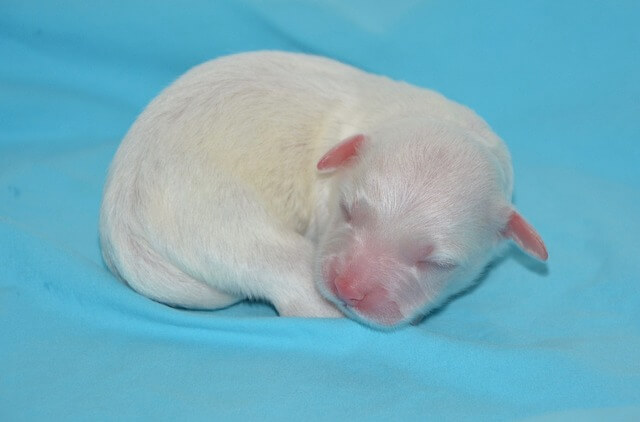
RELATED: How to Feed a Nursing Dog?
Recovery from the C-section
During the procedure, your dog will receive anesthesia. Generally speaking, most dogs will recover from the anesthesia when they come home from the clinic. To completely recover from the anesthesia, some dogs could take from 2-6 hours, depending on many different factors, such as
- Dog breed
- Age
- Type of used anesthetics
- The physical condition of the dog
At this period, you must closely monitor your female dog and not leave her alone with her puppies. Only until your female dog is completely recovered from the anesthesia, you may leave them.
This is sole because female dogs could fall and hurt themselves, or even worse, they could fall or roll over their puppies. Because of this, you must never leave their sight.
Your vet will instruct you about the amount of food and water you can give to your female dog for the first 24 hours post-procedure since eating or drinking too much may cause your dog to start vomiting.
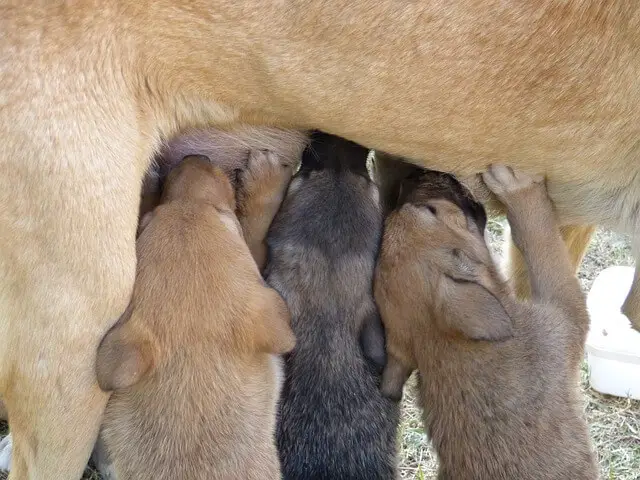
RELATED: 3 Most Common Signs Your Dog is Going Into Labor Soon
When are the stitches removed?
Given the progress of medicine and veterinary practices, C-sections were also progressed to provide better treatment for the dog. Depending on the type of suture material used for stitching, stitches may or may not need to be removed.
Today, many vets will likely use absorbable sutures that will not be visible after the surgery and will not need to be removed.
GOOD TO KNOW: If you can see the stitches on your dog, in this case, they will have to be removed. Usually, removal of the stitches will happen between 10-14 days from the surgery, depending on your dog and her recovery.
Is bloody vaginal discharge from the mother normal?
Bloody vaginal discharge is completely normal, and you have nothing to worry about. When your dog and puppies come home, discharge can last up to 7 days. For the first 3 days, you can expect more discharge from your dog, as this serves as a cleaning procedure.
If you notice bloody vaginal discharge after 7 days, you should contact your vet since this could potentially indicate some infection or some other complications.
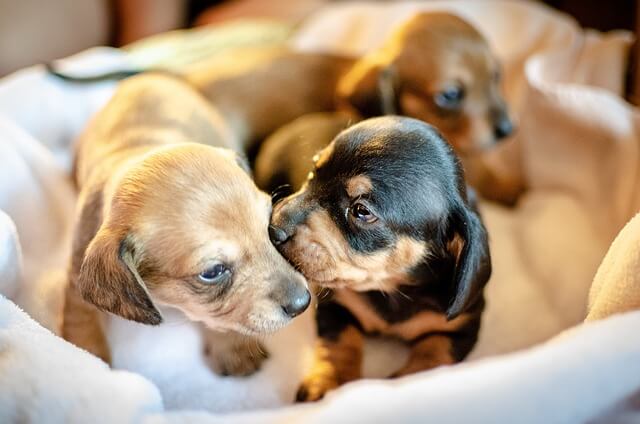
RELATED: False Pregnancy in Dogs
What you need to do after coming home?
After you bring your dog and her puppies home, you must constantly watch them and care for them. Your vet will provide all the important details on properly caring for them if you are an inexperienced breeder.
It is very important that if you notice any changes in your dog's behavior, such as refusal of food, denial of water, any signs of infection, etc., to immediately call your vet. You must act fast in these situations to preserve your dog's and her puppies' health.
How dangerous I C-section in dogs?
C-section is a normal procedure and is pretty common in dogs. As with any surgery, there is always the risk of complication, but generally speaking, C-section is pretty safe.
As with any surgery, your dog will need to receive anesthesia, and this could, in some minor cases, cause problems. To understand what exactly anesthesia is and how dangerous it is for dogs, we suggest that you read this article - Dogs Anesthesia: Risks, Affects & What to Expect
World Dog Finder team

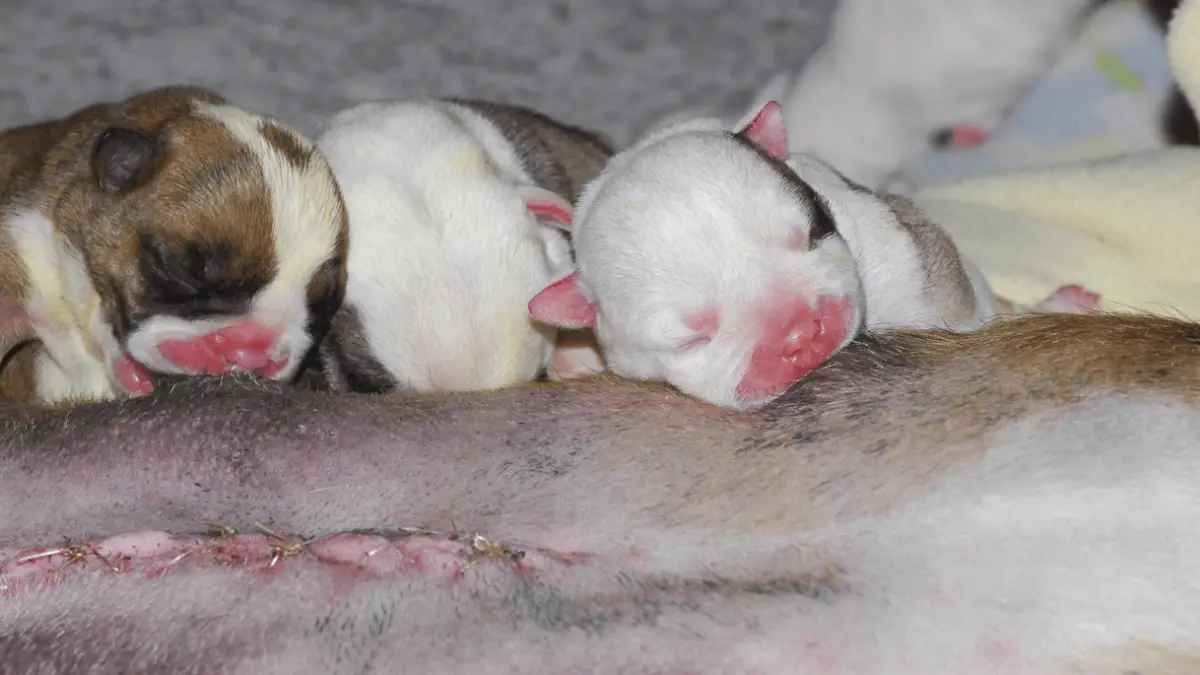

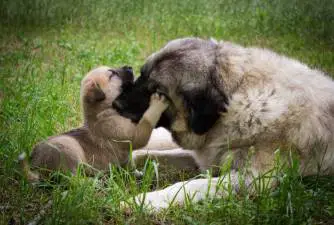

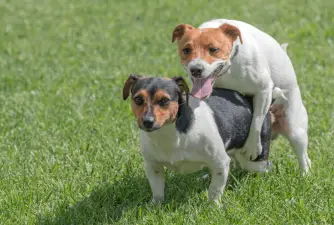


Share